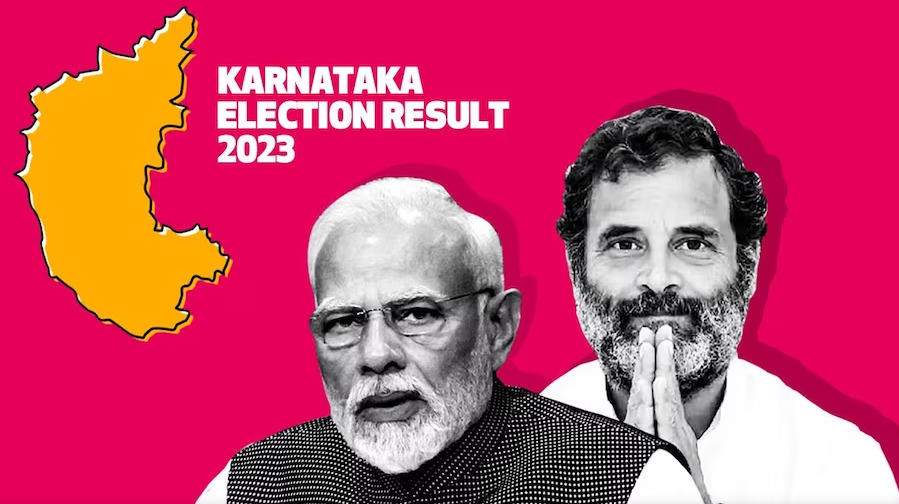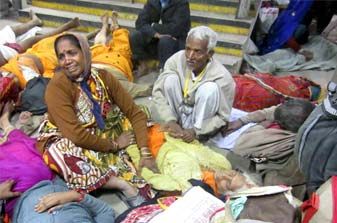Now that the Karnataka elections are done and dusted (at least until Mr. Amit Shah launches the 2023 version of Operation Kamala), the media and social media are going bananas debating the impact of Bharat Jodo Yatra on it, the contributions of EVMs and ATMs to the final vote tally, whether Kumaraswamy will now shift permanently to Singapore, and if resort owners should be given a one time tax waiver to compensate for the loss of income as no horse trading was needed to form the government. But there are a couple of other issues of import that bother me.
About 50 million years ago, the Indian plate, drifting across the Tethys sea from south of Australia, crashed into the Eurasian plate to create the present day Indian sub-continent. Mr. Modi and his merry band, as ignorant of geology as they are of history, may have triggered a second continental drift-but this in time in reverse, with the peninsular part of the sub-continent (comprising the five southern states) drifting away from the mainland.
Karnataka has decisively shut the southern gate for the BJP. Whatever slim chances it had of making in-roads into Telengana and Andhra Pradesh in 2024 have disappeared like the triumphant smile on Mr. Modi’s visage. Consequently, we now effectively have two Indias, with little in common and certainly no trust, between them. One can almost call it a second partition- of the mind, that is- and this may yet turn out to be the BJP’s lasting legacy for the country.
The gap between the southern states and the rest of India has been growing over the years (since before 2014) and is now taking the shape of an unbridgeable chasm. In all indicators which determine the health of a nation or society- economic, demographic, developmental, governance- the southern states are beginning to look like they are on a different continent from the rest of India. Take that most basic of indicators, Per Capita Income, of the five southern states and compare it with the five “Hindu heartland” states of the north. The table below gives the position for 2020-21, at current prices:
STATE PER CAPITA INCOME (in Rs.) RANK
Karnataka – Rs 236451 – Rank 5
Telengaga – Rs 231103 – Rank 7
Tamil Nadu – Rs 212174 – Rank 9
Kerala – Rs 205067 – Rank 11
Andhra Pradesh – Rs 192360 – Rank 16
Rajasthan – Rs 115933 – Rank 25
Madhya Pradesh – Rs 104894 – Rank 28
Jharkhand – Rs 71071 – Rank 31
U.P. – Rs 61666 – Rank 32
Bihar – Rs 43605 – Rank 33
India Av. – Rs 74567
(It can be noticed that all the southern states are far above the national average, whereas 3 of the northern states are well below it).
The same pattern repeats itself for other indicators like literacy rates, Total Fertility Rates, infant mortality, poverty ratios, unemployment etc. I could give the comparative figures but it would take up too much space: those interested could google them on government web sites. But here is another significant statistic: 30% of the national GDP is contributed by the southern states, even though they constitute only 18.2% of the country’s population. And yet, when it comes to central (Finance Commission) devolutions, they receive far less than the Hindi heartland states, thanks to TORs that reward inefficient tax collections, bad governance, poverty ratios and population increase. As per the 15th F.C. recommendations the Union Budget 2023-24 provides Rs. 1,83,237 crores to U.P., more than the amount provided to all the five southern states put together ( Rs.1,61,386 crores). The five northern states mentioned in the table above have cumulatively received Rs.4,66,488 crores, almost three times their southern counterparts.
The south sees this as discrimination which, to be fair, has been happening since before 2014 but has been made worse now by changing the TORs of the F.C. But what has further exacerbated this simmering discontent is the politics of the BJP since coming to power. It continues to push Hindi down southern throats by fiddling with educational syllabi, renaming campaigns where only Hindi is the preferred choice (the latest being the proposed amendment to change the Forest Conservation Act to Van Sanrakshan evam Samvardhan Adhiniyam), the systematic confrontation of Governors with elected governments, the latest instance being the Tamil Nadu Governor’s suggestion that the name of the state should be changed! There is little consideration for feelings, emotions, sensitivities or even history south of the Vindhyas.
But what may now be bringing the kettle to a boil is the BJP’s attempt to impose its anti-Muslim, hyper nationalistic, Hindutva ideology on the southern states. It fails to realise, with its ignorance of history, that the South wants no part of this bigotry and religious hatred of minorities. For one, its Hinduism is as deep rooted as that of its northern cousins with an equally long, if not longer history and traditions. Two, the Hinduism of the south does not suffer from the paranoia and insecurity of the north because the Mughals came to the south very late in their reign, when the fervour for demolishing temples had waned considerably and had been replaced by a more mature politics of trade and cooperation. Three, the south was far removed, geographically, from the horrors of Partition, and therefore its two major communities have no reason to fear or hate each other. Four, it has lived in harmony with the other sizeable minority, the Christians, for centuries, ever since Saint Francis Xavier landed on the shores of Goa in May,1542.
Notwithstanding the above, the BJP has been trying for years to stir the religious cauldron in the south, and had made Karnataka its southern laboratory in the run-up to these elections. With the help of a hijacked government it tried everything- hijab, halal, Tipu Sultan, removal of quota for Muslims, Bajrangbali- but failed miserably. In the process, however, it has widened the north-south divide and made the latter even more suspicious of not only the BJP but all political parties north of the Vindhyas.
A perception and feeling is growing in the southern states that the north is acting as a drag on their development and progress, cornering all national resources for their own benefit. Even worse, there is now also a fear, ever since the BJP assumed power in Delhi, that they are being politically marginalised. The apparition that haunts them is the impending delimitation of Parliamentary constituencies on the basis of revised population figures, which is due in 2026. So far the exercise has been kept in suspended animation since 1971. It is a contentious issue since the southern states are likely to lose out: they have done much better than the cow belt states in controlling population growth, and will therefore lose many seats once current population figures or projections are taken into account for allocating seats in Parliament.
If the 2011 census is made the basis for the delimitation then four northern states ( U.P., Bihar, MP and Rajasthan) shall gain 22 seats while the four southern states (AP, Kerala, Tamil Nadu and Telengana) are set to lose 17 seats. (Their position gets progressively worse with each succeeding census). What this means for them is that delimitation will only push them further into the political margins, if population figures do not continue to remain frozen. Doing that, however, may require a constitutional amendment, and the south has every reason to suspect that the BJP would not be inclined to bring in such an amendment. Its main support base is the cow-belt states, it is irrelevant in the south, and it would be happy to gain seats in the northern states to consolidate its power. And it may already be working in that direction with its usual foresight and thoroughness: the new Parliament building is reported to have space for 884 members of the Lok Sabha, against the current strength of 543- something which the southern states have not missed noticing.
To put it in pure geological terms, the peninsular plates are currently under a lot of tension and tectonic pressure. A victory for the BJP in 2024 could result in their beginning to shift, a continental drift we could do without and should all be worried about. This, perhaps, is one context in which we should be looking at the BJP’s loss in Karnataka.
| The author retired from the IAS in December 2010. A keen environmentalist and trekker he has published a book on high altitude trekking in the Himachal Himalayas: THE TRAILS LESS TRAVELLED.
His second book- SPECTRE OF CHOOR DHAR is a collection of short stories based in Himachal and was published in July 2019. His third book was released in August 2020: POLYTICKS, DEMOCKRAZY AND MUMBO JUMBO is a compilation of satirical and humorous articles on the state of our nation. His fourth book was published on 6th July 2021. Titled INDIA: THE WASTED YEARS , the book is a chronicle of missed opportunities in the last nine years. Shukla’s fifth book – THE DEPUTY COMMISSIONER’S DOG AND OTHER COLLEAGUES- was released on 12th September 2023. It portrays the lighter side of life in the IAS and in Himachal. He writes for various publications and websites on the environment, governance and social issues. He divides his time between Delhi and his cottage in a small village above Shimla. He blogs at http://avayshukla.blogspot.in/ |




Excellent prediction, Sir